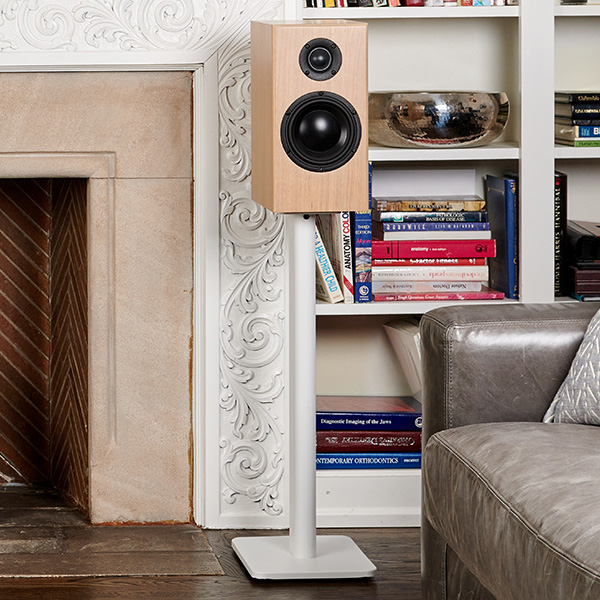
Choosing the right amplifier for your speakers is an exciting step toward unlocking the full potential of your audio system. A well-matched amplifier will bring out richer detail, greater clarity, and a more dynamic soundstage, allowing your Totem Acoustic speakers to perform at their very best. A poor amplifier selection on the other hand can result in poor sound quality, distortion, or even damage to your audio components. Think of the amplifier as the heartbeat of your system—powering your speakers with precision and ensuring a seamless, immersive listening experience. Whether you’re building a stereo setup, a dedicated listening room, or a home theater, understanding amplifier specifications and their interaction with your speakers will help you make a confident and rewarding choice. This guide will walk you through the key factors to consider so you can find the perfect amplifier to elevate your sound.
Before selecting an amplifier, it’s essential to consider the specifications of your speakers. Two primary factors determine compatibility between an amplifier and speakers:
Each speaker has a recommended power range, typically expressed in watts (W). This range indicates the amount of power the speaker can handle without distortion or damage.
Totem Acoustic speakers are designed to deliver outstanding performance, and pairing them with an amplifier that provides clean, stable power within the recommended range ensures optimal sound quality.
Speaker impedance is measured in ohms (Ω) and represents the electrical resistance the speaker presents to the amplifier. Most home audio speakers, including Totem models, have an impedance rating of 4 or 8 ohms.
Amplifiers are classified based on their circuit topology and efficiency. Here’s a breakdown of the most common amplifier classes:
Another consideration is whether to go with a solid-state or tube amplifier.
Speaker sensitivity, measured in decibels (dB), indicates how efficiently a speaker converts power into sound.
Totem Acoustic speakers often have sensitivity ratings in the mid-to-high range, meaning they perform well with moderately powered amplifiers, but benefit from quality amplification for the best dynamics and resolution.
If space and budget allow, separates provide the ultimate customization, but high-end integrated amplifiers are an excellent choice for most setups.
When selecting an amplifier, consider these additional features based on your needs:
While online research and specifications can help narrow down your amplifier choices, nothing compares to an in-person audition. Visiting your local Totem Acoustic dealer allows you to experience different amplifiers firsthand, ensuring you find the best match for your speakers and personal listening preferences.
✔ Hearing the Differences – Every amplifier has a unique sonic signature that can enhance or alter the way your Totem Acoustic speakers sound. By listening in person, you can determine which amplifier provides the best synergy with your speakers and musical tastes.
✔ Expert Recommendations – Experienced audio dealers have in-depth knowledge of amplifier and speaker pairings. They can recommend specific models that will bring out the full potential of your Totem speakers, factoring in your room size, preferred listening levels, and music genres.
✔ Controlled Listening Environment – Dealers have dedicated listening rooms that offer an optimal environment to evaluate an amplifier’s performance. This controlled setting allows you to focus on sound quality without distractions or poor acoustics affecting your judgment.
✔ Hands-On Experience – Trying out different amplifiers helps you understand how they feel and function. You can test their user interface, connectivity options, and overall build quality to ensure they fit your needs.
To maximize your listening session at the dealer:
Totem Acoustic partners with top-tier audio dealers worldwide to provide the best listening experience. To find a local Totem Acoustic dealer, please jump to our Dealer Locator page.
Choosing the right amplifier for your speakers is a critical decision that impacts the overall performance and longevity of your audio system. By matching power, impedance, and sensitivity, and considering amplifier type, topology, and features, you can create an audio system that delivers incredible sound quality and reliability.
If you enjoyed this article and want to explore more topics related to high-end audio and speaker performance, check out more of our articles at Totem Acoustic News + Reviews.
Share this article with your friends!


Get the latest info on new products, events, contests and more!

